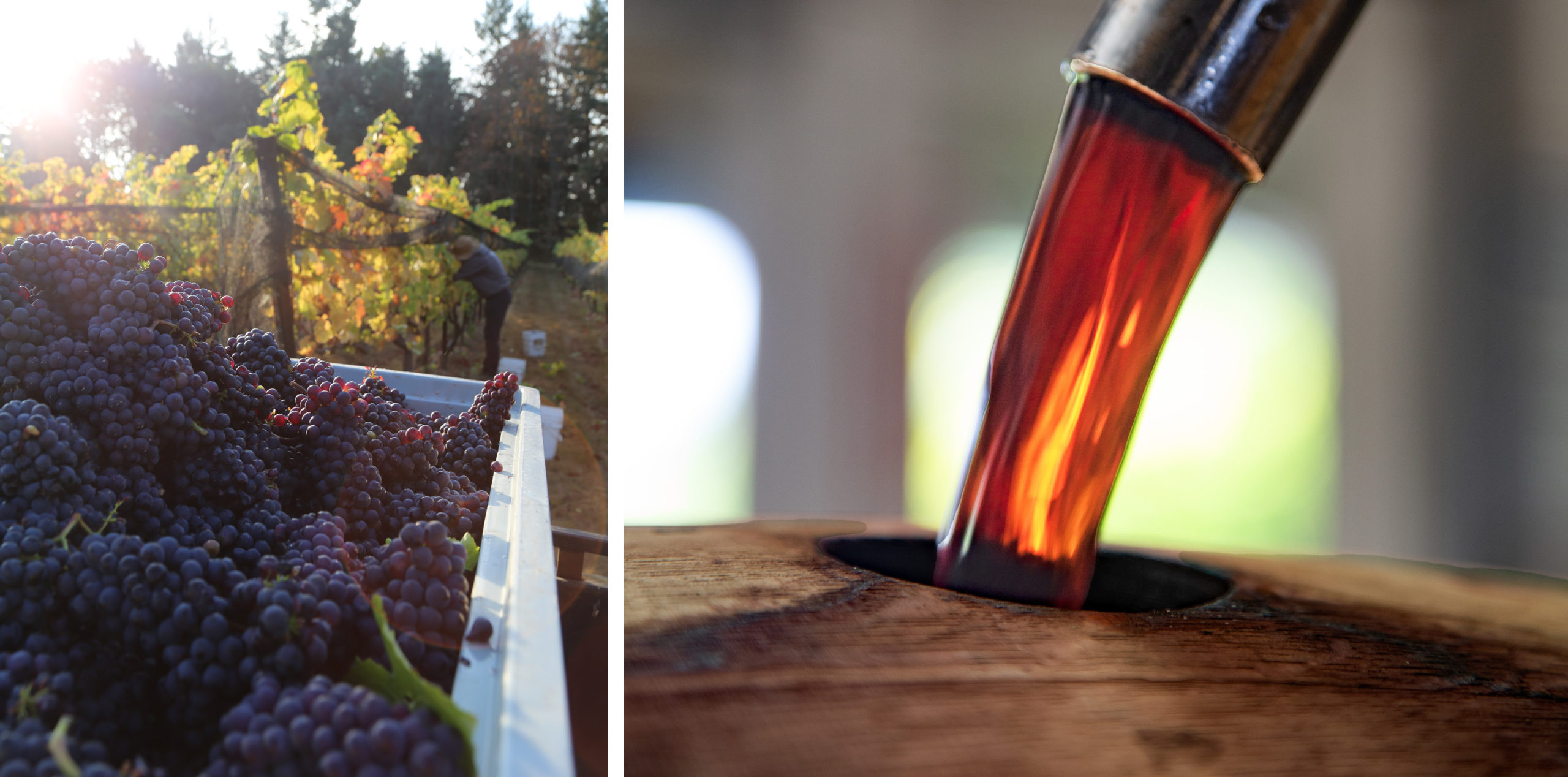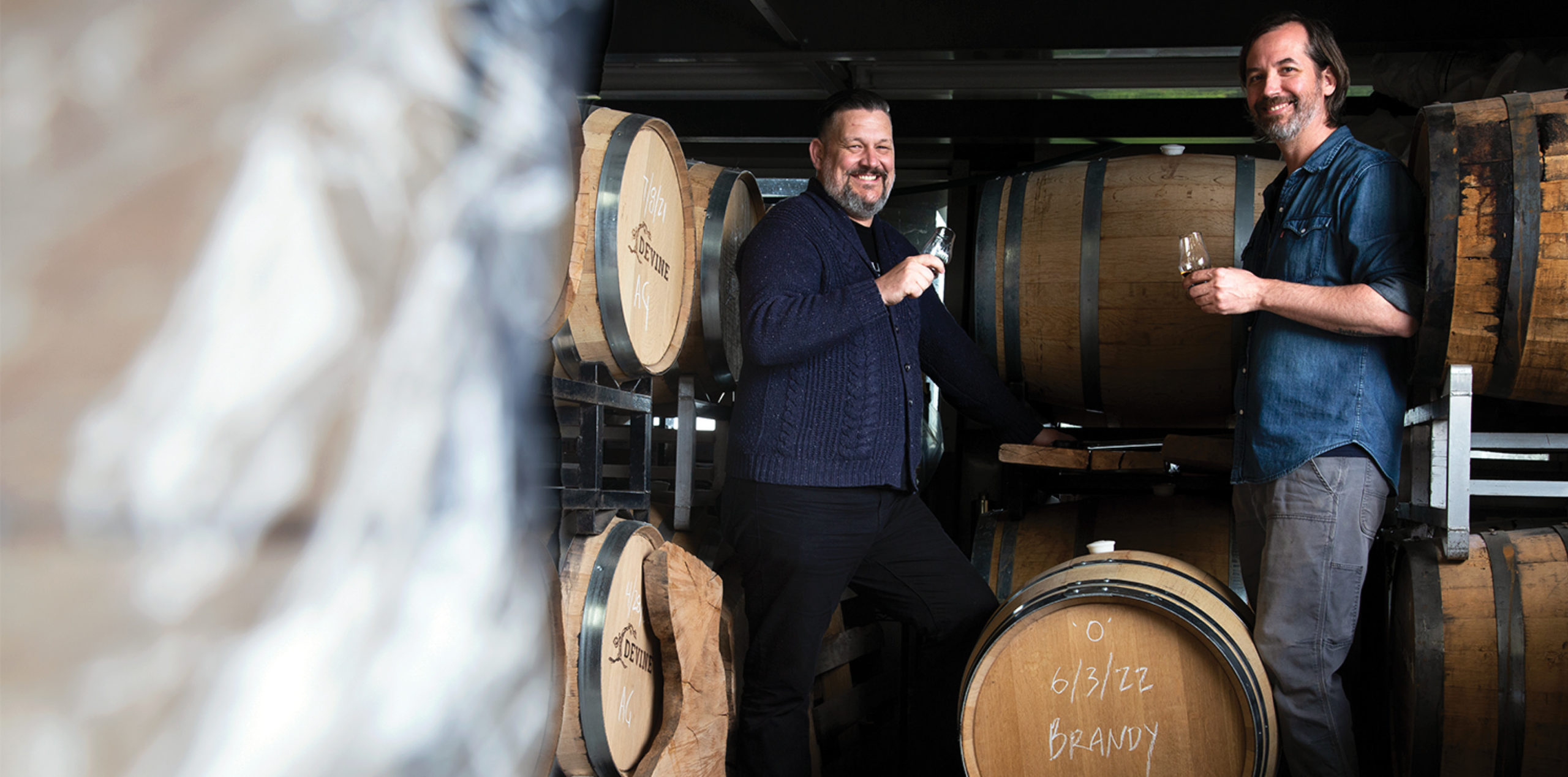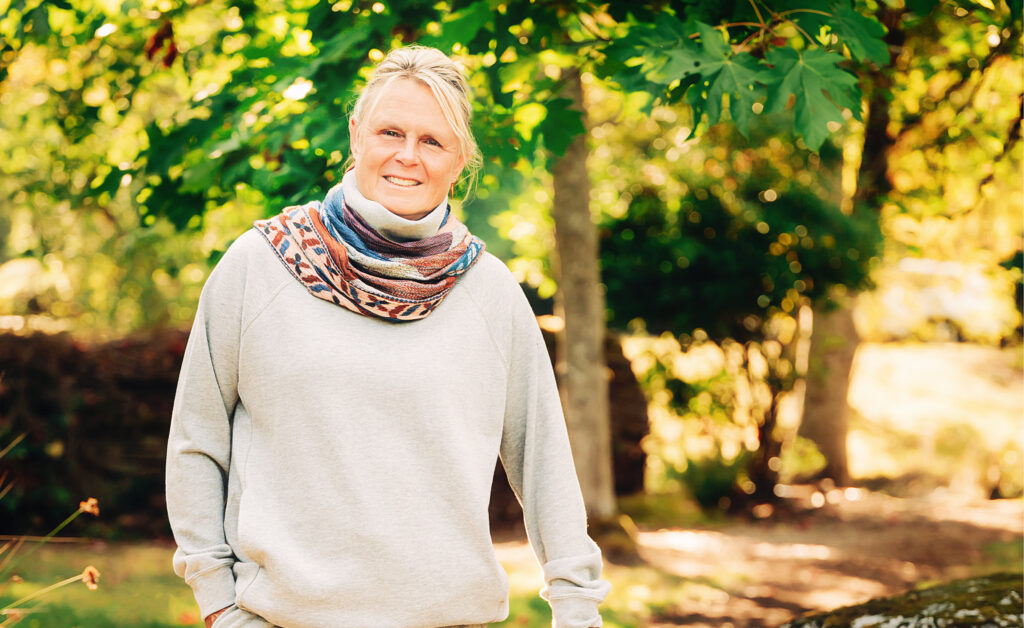by Tilar J. Mazzeo | photos courtesy Devine Distillery –
Every so often, I like to check in with some of the local craft brewers, distillers and winemakers to get an idea of what we can expect for new-and-upcoming releases here on the Saanich Peninsula, and, when I recently heard that Kevin Titcomb and the folks at DEVINE Distillery were releasing a B.C. grape-based solera-method brandy in 2024, I wanted to get the details. Here are some of the highlights from our conversation and interview.
I began by asking Kevin for a quick introduction to brandy, for anyone who is new to it, and as Kevin explains, brandy begins with any fruit. DEVINE has a long history of working with a wide variety of local fruits – everything from strawberries and blackberries to apples, plums, and pears – to produce brandy. The fruit is crushed and pressed, and, just as with traditional grape production, fermented into wine. (For all you home winemakers out there, if you’ve not made a strawberry wine, I’m just saying: you have not tasted summer.)
From there, the wine is double-distilled to produce a clear spirit, and Kevin explains that it was in early 2019 that they connected with local hospitality professional Shawn Soole to explore the idea of making a British Columbia grape-based brandy. DEVINE has, of course, estate vineyards, and, intrigued by the idea, they decided to produce not only a grape-based brandy but one made in a particularly interesting, rich and traditional style known as solera production.
Now, I happen to be writing this month’s column a few miles from Jerez de la Frontera, the home of solera-style sherry making, and next month’s column will talk a bit about sherry, manzanilla, and dry Palomino wines, all underpriced and underappreciated on the international wine market and well worth learning a bit more about and trying. But I love the idea that this (largely) Mediterranean solera tradition is being pioneered back home as well.
In a nutshell the process for a solera-style brandy goes something like this: after the wine is distilled into a grape-based spirit, the spirits are aged in neutral oak barrels. The heart of the solera system – solera just means “on the ground” or “ground-level” – is the fractional circulation of new wine (or spirit) though partially-filled barrels containing aged wine (or spirit), to blend and marry the aromatics during aging. In Spanish bodegas, where the barrels are stacked and transferred by gravity, the spirits travel from top to “ground,” a small proportion at a time, until the finished product is drawn from the bottom cask. It’s an ancient tradition. In Italy, it’s known as “perpetual” reserve blending, because the fractional rotation means the barrels are never empty. The system has been more recently adopted in some of the Champagne houses in France, and back in the 1930s the brewers at Ballantine’s Burton Ale introduced the technique into North American beermaking. Today, there’s new interest in the solera method in the crafting of sour ales, in particular. I’m not aware of any local brewmasters using solera methods, but if you know of someone, please reach out.
Meanwhile, at DEVINE, Kevin tells me they are now in their fourth year of the solera rotation and hoping to release the first local solera-style brandy sometime next year. As is a trend on the Peninsula, DEVINE has phased out their tasting room in favour of making more direct local connections at farmer’s markets, where there will be tasting opportunities. You can always pick up a bottle directly from the distillery store, and perhaps get a peek at the soleras once the brandy is released. Like their Glen Saanich and Ancient Grains whiskies, the first release will likely sell out quickly; the best way to stay updated on release dates is by subscribing to their e-newsletter (free to join at www.DEVINEDistillery.com).





